CRU Winery is honored to be recognized for crafting high-quality wines that consistently receive 90+ point scores and gold medals from publications and competitions including Wine Enthusiast, Wine & Spirits Magazine and the San Francisco Chronicle. CRU’s history of acclaim is a testament to our talented winemaking team and grower partners.
Latest News:
Winemaker At CRU Winery Inspiring Others With Path And Craft
CRU Winery Celebrates 20th Anniversary
CRU Winery Announces New Vineyard Partners
CRU Winery launches scholarship with California State University System
CRU Sierra Madre Pinot Noir receives Platinum at 2021 Monterey Wine Competition
CRU Winery Santa Lucia Highlands Tasting Room Becomes Blue Zones Certified
CRŪ Winery is proud to share they have been designated a certified Blue Zones tasting room at their Santa Lucia Highlands location. This impressive certification recognizes CRU Winery for actively implementing lifestyle changes and environmental modifications to promote longevity and overall well-being.
CRU Winery has been active with the Blue Zones Project since 2023, with a monthly hiking series at the CRU Winery tasting room in Soledad. This series inspired the winery to complete the certification process which addressed four pillars consistent with promoting overall well-being. With this certification, CRU Winery becomes the first tasting room in Monterey County to achieve a Blue Zones certification.
As a part of the Blue Zones pillar of moving naturally, CRU Winery will once again be teaming up with Valley Farm Management and Blue Zones Project Monterey County to offer their monthly hiking series at the CRU Winery Santa Lucia Highlands tasting room. Participants will hike through the sustainably farmed Paraiso Vineyard learning more about the importance of growing wines sustainably and then end with a tasting of CRU's award-winning wines.
About Sarmento Vineyard
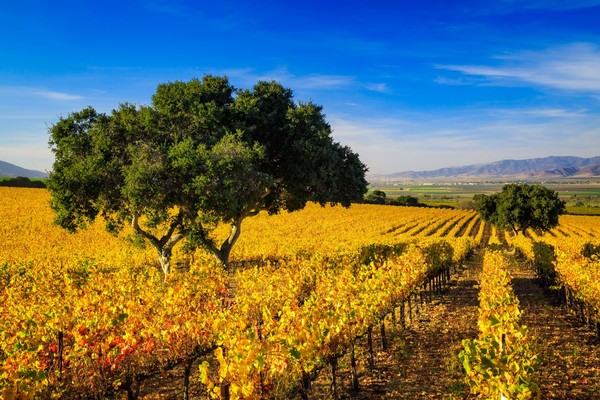 Located in the Monterey's Santa Lucia Highlands, CRU Winery has sourced wine from the Sarmento Vineyard and had a close relationship with the Smith Family (who own and farm the land) for over 10 years.
Located in the Monterey's Santa Lucia Highlands, CRU Winery has sourced wine from the Sarmento Vineyard and had a close relationship with the Smith Family (who own and farm the land) for over 10 years.
The Smith Family have been growing grapes in the Santa Lucia Highlands for over 40 years and are considered pioneers of the Santa Lucia Highlands. Rich Smith, the founder of Valley Farm Management, was integral in establishing the Santa Lucia Highlands as an AVA in 1991.
The Sarmento Vineyard is located in the middle of the Santa Lucia Highlands bench and sits 600 feet above the Salinas Valley floor. CRU winemaker, Jose Reyes, has been working with the Sarmento Vineyard for over 10 years. During this time, he has had the pleasure of working with various sections of the vineyard and identifying which areas of the Sarmento Vineyard produce the best grapes. Block 19, the highest point on the Sarmento Vineyard, has long been his favorite location for Pinot Noir and in 2022 he crafted the Sarmento Vineyard Pinot Noir exclusively from Block 19.
With its close proximity to the ocean and Monterey Bay, cool winds are funneled into the vineyard providing a long, cool growing season ideal for Chardonnay and Pinot Noir.
Jose's Winemaking Journey with Regan Vineyards
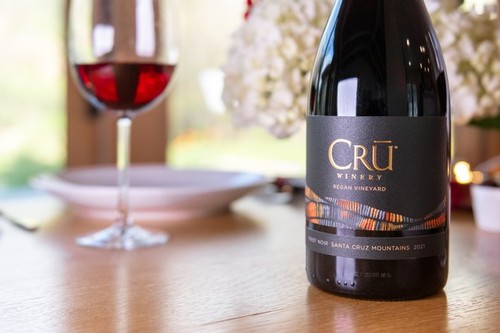 When it comes to his journey in winemaking, CRŪ winemaker Jose Reyes credits his introduction to the business to the historic Bargetto Winery and Regan Vineyards in the Santa Cruz Mountains. As a young man, Jose used to pass the winery on his way to work and his passion for winemaking was ignited.
When it comes to his journey in winemaking, CRŪ winemaker Jose Reyes credits his introduction to the business to the historic Bargetto Winery and Regan Vineyards in the Santa Cruz Mountains. As a young man, Jose used to pass the winery on his way to work and his passion for winemaking was ignited.
He met with the winery owner and began working at the winery the next day. A quick learner, Jose was incredibly hands-on working in the cellar, on the bottling line, harvesting and learning everything he could about crafting high quality Central Coast wines. During his time at Bargetto Winery, he had the opportunity to explore and make wines from Regan Vineyards and their famous Mt. Eden clone.
Jose moved on to work at other wineries but he often thought back to Regan Vineyards. Situated atop a hilly knoll in the Santa Cruz Mountains, Regan Vineyards receives cool breezes off the Monterey Bay and its hilltop setting delivers consistent sun exposure. These combine with unique soils and mountainous topography for wines rich in flavor with bright acidity.
“My very first introduction to wine was Regan Vineyards. After my first harvest I was hooked, and I knew I wanted to be a winemaker. Regan Vineyards has always been a vineyard I wanted to make wine from and I am excited to now craft CRŪ Winery Regan Vineyards Chardonnay and Pinot Noir from the Mt. Eden Clone." This is a great moment for me to honor my winemaking roots while sharing this amazing wine with our members.” Jose Reyes, CRŪ Winemaker.
All About Bien Nacido Vineyard
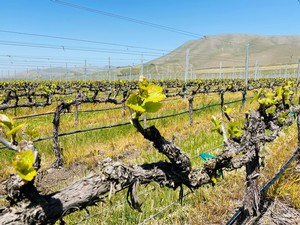 Located just miles from the Pacific Ocean, the Bien Nacido Vineyard is considered one of the finest vineyards in California receiving recognition worldwide for the stellar grapes it produces. In 2021, Food & Wine Magazine named it as one of “The 17 most important California vineyards,” Forbes Magazine hailed it a “Single Vineyard Superstar” and Wine Enthusiast included it in their list of the “10 Vineyards Behind the World’s Most Famous Wines.”
Located just miles from the Pacific Ocean, the Bien Nacido Vineyard is considered one of the finest vineyards in California receiving recognition worldwide for the stellar grapes it produces. In 2021, Food & Wine Magazine named it as one of “The 17 most important California vineyards,” Forbes Magazine hailed it a “Single Vineyard Superstar” and Wine Enthusiast included it in their list of the “10 Vineyards Behind the World’s Most Famous Wines.”
Part of what makes this vineyard so sought after is its unique topography and location. With its close proximity to the Pacific Ocean, the vineyard receives cold ocean air and fog for a cool growing season and boasts vineyard plantings on benchland, hillsides and flatlands leading to wines known for impressive layers of flavor. We are honored to be among a select few wineries who are producing wines from this famous vineyard.
All About Sierra Madre Vineyard
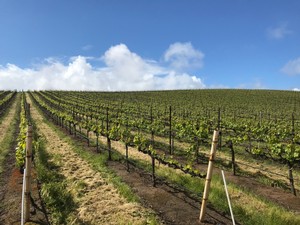
Planted in 1971, the Sierra Madre Vineyard is one of the oldest vineyards in Santa Maria Valley. Over the years a variety of wineries have crafted wines from this prestigious vineyard including Au Bon Climat, Byron, Ken Brown and Paul Lato.
The vineyard was also owned for a period of time by Robert Mondavi, the father of California wine, who used the vineyard’s southern exposure and low yielding vines to create wines with depth and minerality. At CRŪ, we are fortunate to have partnered with the Sierra Madre Vineyard for over ten years and continue to be impressed by the quality of fruit we receive from this award-winning vineyard.
How long does an open bottle of wine last?
 We’ve all been there. Over the weekend you opened up a beautiful bottle of wine but didn’t finish it. It’s now mid-week and you’re wondering, is my wine still good? How long does a bottle of wine last after it’s been opened.
We’ve all been there. Over the weekend you opened up a beautiful bottle of wine but didn’t finish it. It’s now mid-week and you’re wondering, is my wine still good? How long does a bottle of wine last after it’s been opened.
Most wines will last from 3-7 days after they are opened. Did you drink wine on day 8? Don’t worry, unlike spoiled food, spoiled wine won’t harm you. White wines and red wines have slightly different timelines after they are opened. Light white wines last about 5-7 days if stored in the refrigerator and fuller bodied white wines (such as heavily oaked Chardonnay), will last in the refrigerator for 3-5 days.
For red wines, if kept in a cool, dark place with a cork they will last 3-5 days. What happens after the recommended storage time? After wine has been open for a while, the alcohol will begin to oxidize, this can make the wine taste bitter, dull or sometime give it a vinegar taste.
One of the best ways to enjoy wine if you know you won’t drink the whole bottle is to use a Coravin. Using a Coravin allows you to pour wine without removing the cork so the wine stays fresh as if it has never been opened.
What is sustainable wine growing?
You have probably heard about sustainable farming but what does that mean for growing grapes? Sustainable winegrowing is a set of growing practices that protect the environment while also being socially responsible and economically viable.
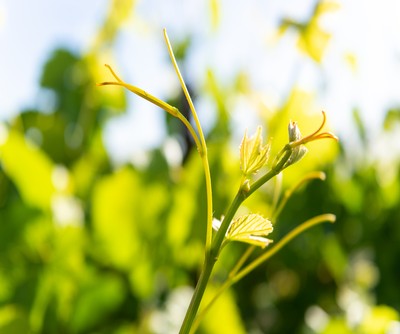 These practices include conserving water and energy, maintaining healthy soil, protecting air and water quality, preserving local ecosystems and wildlife habitats and enhancing relationships with employees and communities.
These practices include conserving water and energy, maintaining healthy soil, protecting air and water quality, preserving local ecosystems and wildlife habitats and enhancing relationships with employees and communities.
So, what’s the difference between organic and sustainable wines? While many of the requirements overlap, sustainability also recognizes resource management (water, energy, community) and doesn’t limit a winery’s ability to use natural preservatives in wine which extend a wines shelf life. Similar to being certified organic, vineyards and wineries go through regular comprehensive reviews to become sustainably certified and keep their certification by third-party agencies.
At CRŪ Winery, we are proud that all our partner vineyards are certified sustainable. By practicing sustainable winegrowing, our partner vineyards are maintaining a healthy and beautiful environment and protecting the environment for future generations.
What does an Enologist do?
 There are several different people needed to run a winery. A critical position, but one you may not know about, is the Enologist.
There are several different people needed to run a winery. A critical position, but one you may not know about, is the Enologist.
An Enologist is a member of the winemaking team that is responsible for the chemistry and biology of the wine. Similar to a winemaker, they spend time in the vineyard and cellar but in addition, Enologists are often in the lab, running tests and analyses on the wine.
There are several characteristics of wine such as acid level, microbial activity and nutrient levels that must be monitored and tested to ensure they are exactly where they need to be. From these tests, winemakers make adjustments as needed to ensure the highest quality wines.
Another important role of an Enologist is monitoring sugar and acid levels during harvest. These are critical to helping a winemaker decide the best time for vineyards to be picked.
Eriq Davila joined as CRŪ Winery’s Enologist in 2023. With seven years of experience in enology and winemaking, he has been an important addition to the team working closely with winemaker Jose Reyes on crafting quality, highly acclaimed wines.
What is an Intentional Rose?
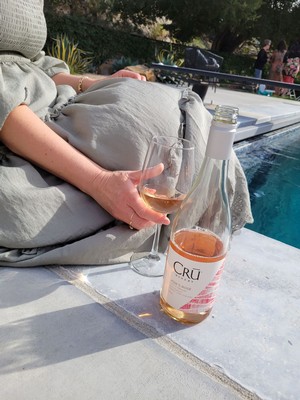 When it comes to crafting Rosé, not all are created equal. There are a few different methods for making Rosé. The most common method is the saignée method (French for “to bleed”). Rosés made using the saignée method are often a byproduct of red winemaking. Winemakers “bleed” off some of the wine early in the maceration process to make their red wines more powerful and fruit forward. The wine that was bled off later becomes Rosé.
When it comes to crafting Rosé, not all are created equal. There are a few different methods for making Rosé. The most common method is the saignée method (French for “to bleed”). Rosés made using the saignée method are often a byproduct of red winemaking. Winemakers “bleed” off some of the wine early in the maceration process to make their red wines more powerful and fruit forward. The wine that was bled off later becomes Rosé.
We take a different approach and craft “intentional” Rosé, meaning every part of the winemaking process is done with intention. We specifically source the fruit, choosing varietals and vineyards to craft the exact style of Rosé Jose strives for. Our winemaking team works closely with our vineyard partners to pick the grapes at the perfect time to ensure bright and juicy fruit flavors and vibrant acidity. Once we receive the grapes into the winery, we immediately destem and gently press the grapes to capture the exact aromas and flavors Jose wants. The resulting Rosé is one intentionally crafted to be vibrant, juicy and fruit forward that leaves you wanting another sip.
You know you want to
Sign Up For Our Newsletter
Keep up to date on the latest wine releases, events, and promotions and get 10% off your next order.